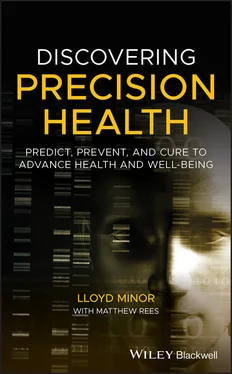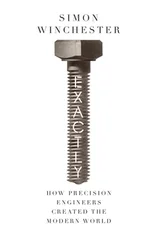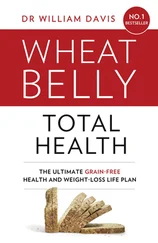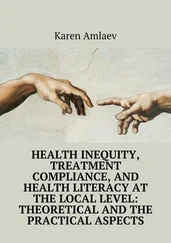The health outcomes in the United States are not what they should be, particularly given the level of spending. In 2016, the United States devoted $3.3 trillion to health care, which was 17.9 percent of the country’s gross domestic product [24]. Other developed economies spend less—a lot less. Among the members of the Organization for Economic Cooperation and Development—a group of developed countries—the second‐highest level of spending in 2016, as a share of GDP, was 12.4 percent (Switzerland) [25]. The U.S. figure was also twice as high as the average of other comparable countries [26]. Yet U.S. health outcomes are typically no better—and often worse—than those found in other developed countries.
Much of the U.S. health care system is based on a reimbursement model that rewards volume of care rather than outcomes of care. As a result, there’s little incentive for physicians or hospitals to focus on whether specific treatments are successful, or on the costs of post‐acute care.
Few people outside the health care industry have a comprehensive understanding of the interplay between health care delivery and the fees charged and the payments made. “Imagine if you paid for an airplane ticket and then got separate and inscrutable bills from the airline, the pilot, the copilot, and the flight attendants,” writes Elisabeth Rosenthal, a Harvard‐trained physician and former New York Times reporter. “That’s how the healthcare market works” [27].
To further illustrate this point, consider a story from Alex Azar, the current U.S. secretary of health and human services. In a March 2018 speech, he recounted his own battle with opaque pricing in a hospital:
A few years ago, my doctor back in Indiana wanted me to do a routine echocardio stress test. I figured this could occur within the scope of his practice, which was connected to a major medical center. Instead, I was sent a few floors down, where I was told to start handing over all sorts of information to a receptionist. Soon enough, I have a plastic wristband slapped on me, and, to my surprise, what I thought would be a simple test in the room next door had resulted in my being admitted to the hospital.
Now, I had a high‐deductible plan, so I would be paying for this test out of pocket. As someone who works in healthcare, I knew that the sticker price on the test had just jumped dramatically by my receiving it within a hospital—something that might never occur to most healthcare consumers. So I asked how much the test was going to cost, and was told that information wasn’t available. Fortunately, I didn’t just fall off the turnip truck, so I persisted, and, eventually the manager of the clinic appeared and gave me the answer. The list price was $5,500.
I knew that wasn’t the right answer either. The key piece of information was what my insurer would pay as a negotiated rate, or what I’d pay with cash. That information didn’t come easily, but eventually, I was told it would be $3,500.
I happened to know of a website where you could search typical prices for such procedures, so I looked up what it would have been if I’d received it outside of the hospital, in a doctor’s office. The answer was $550.
Now, there I was, the former deputy secretary of Health and Human Services, and that is the kind of effort it took to find out how much I would owe for a procedure. What if I had been a grandmother? Or a 20‐something with a high‐deductible plan [28]?
The opaque pricing Azar describes is a source of exasperation for countless individuals, but it also points to the inefficiencies in the system and a reason why health care spending over the past decade has been rising five times faster than the inflation rate.
Overlooking the Biggest Determinants of Health
The U.S. health care system is primarily devoted to the treatment of diseases after they occur. That has led to the creation of a health care delivery system that often provides leading‐edge treatments for a range of conditions and diseases. But medical care directed toward treating disease plays only a small role in determining our health outcomes. Much more important are behavioral, environmental, and social factors. Those factors are largely overlooked within the U.S. health care system—something I explore in detail in the next chapter.
There’s one other key contributor to dysfunction in the delivery of health care: physicians. More specifically, physicians who are burned out. That was the conclusion of a 2018 paper by Tait Shanafelt, director of the WellMD Center at Stanford, and Daniel Tawfik, an instructor in pediatric critical care medicine at Stanford. As part of the study, they sent surveys to physicians throughout the United States. Nearly 6,700 responded—and 10 percent declared that they had been responsible for at least one major medical error in just the previous three months. The survey also revealed that physicians who reported burnout were more than twice as likely to commit a medical error than physicians who were not burned out [29]. Those errors included mistakes in medical judgment, mistakes in diagnosing illnesses, and technical mistakes during procedures.
The frequency of mistakes is even more worrisome given the prevalence of physician burnout. The same study revealed that 55 percent of physicians were experiencing symptoms of burnout, which can stem from many different factors. While we need to be focused on the well‐being of all health care professionals, a 2017 article coauthored by Bryan Bohman, a Stanford professor and founder of our physician wellness committee, highlighted a few reasons to be focused on physicians:
First, physicians have been hard‐hit by the organizational transformation of the health care system, resulting in an epidemic of burnout and declining professional fulfillment. They have suffered a reduction in their sense of professional autonomy, have experienced a significant increase in clerical duties, and are beholden to a growing array of imperfect and inconsistent quality and productivity metrics. Second, medical training has historically acculturated physicians to deny their own self‐care in the service of others [30].
Another contributor to burnout is the documentation demands associated with electronic health records. Studies show that physicians devote 34 to 55 percent of their workday to EHR‐related tasks. Steven Lin, the medical director at Stanford Family Medicine, points out that while some of this time bolsters ongoing care, “much of it instead serves billing documentation, defense against litigation risk, and regulatory compliance.”
I don’t think many people become doctors because they love doing documentation. While documentation is part of the medical school curriculum at Stanford, for many aspiring physicians it’s something they must figure out as they go through their clerkships and residency training. Then, when they start to practice, the burdens are likely to grow: EHR record‐keeping, inbox management, digital messages from patients, managing providers, etc. “It’s a huge shock to a lot of the younger trainees, as well as older, experienced physicians,” says Lin. “Across the age and experience spectrum, many doctors are just deciding not to go to EHRs and risk the penalties surrounding meaningful use, or to leave medicine altogether. It’s a big problem.” Indeed, a 2017 study commissioned by the Association of American Medical Colleges predicted that by 2030, the United States will face a shortage of between 40,800 and 104,900 physicians [31].
Studies show that physicians who use medical assistants to act as digital scribes and record the content of the patient‐doctor interaction show far more satisfaction and lower rates of burnout. University of Colorado Health experimented with increasing the ratio of medical assistants (MAs) to physicians, from 0.4 MA per physician to nearly two. Before the physician enters the room, an MA has spent 20 minutes talking with the patient, updating the medical records, and handling minor medical issues, such as vaccines and screenings. When the physician walks in, the MA stays in the room, acting as a scribe during the exam. They found that over the course of a year, this approach went a long way toward relieving physician burnout: the metric they use to measure physician burnout declined from 55 percent to 14 percent. Assigning two people for each physician to act as scribe may not be a cost‐effective solution, however.
Читать дальше












